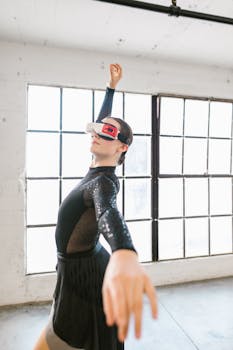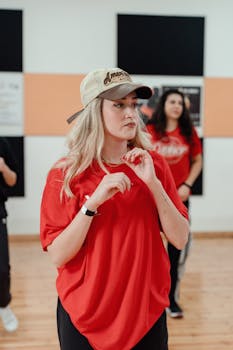As the world continues to evolve, dance communities across the United States are transforming alongside. Dance is not just an art form; it represents culture, identity, and connection among people. In the coming years, these communities will likely experience significant changes driven by social, technological, and cultural shifts.
These transformations will enhance how dancers interact, learn, and create. Communities will incorporate a mix of in-person and virtual experiences, allowing for wider participation. This blend of traditional and modern approaches ensures dance remains accessible and relevant to diverse audiences.
Understanding the future of dance communities is critical for dancers, instructors, and enthusiasts alike. This article delves into the upcoming trends, challenges, and opportunities that will shape the dance landscape in the United States.
Shift Towards Inclusivity
Inclusivity will play a vital role in the future of dance communities. Traditional barriers like gender, age, and skill level are gradually dissolving. By embracing a more diverse range of participants, dance can become more enriching.
The focus on inclusivity promotes various styles and traditions. Dancers are encouraged to explore and share their unique backgrounds. This resonates with audiences, allowing deeper connections through performance and engagement.
Dance studios and community centers are adapting to these changes by offering various classes. Programs designed for all ages, abilities, and backgrounds foster creativity and growth in participants. This proactive approach strengthens the fabric of dance communities.
Moreover, collaboration among different communities encourages unity. As dancers come together to share experiences, they create new forms of art. This collaborative spirit results in thrilling performances that reflect diverse narratives and styles.
Overall, the push towards inclusivity ensures dance remains a communal and expressive activity. Embracing differences creates vibrant dance communities that feel welcoming to everyone.
Technological Integration in Dance
As technology continues to advance, its integration into dance communities is inevitable. Digital platforms are becoming essential tools for collaboration and learning. This change facilitates remote learning and interaction among dancers from different locations.
Virtual classes have surged in popularity, enabling dancers to connect globally. This shift opens up opportunities for mentorship and networking. Online workshops and competitions allow dancers to showcase their talents beyond geographical limitations.
Additionally, technology enhances the creative process in dance. Tools such as augmented reality and virtual reality can transform how performances are choreographed and experienced. Such innovations provide immersive experiences for both dancers and audiences.
Social media also plays a critical role in shaping dance communities. Dancers can share their journeys, techniques, and performances with a global audience. Platforms like TikTok and Instagram fuel trends and foster community engagement.
Ultimately, embracing technology enriches the dance community experience. By leveraging digital tools, dancers can connect, collaborate, and innovate like never before.
The Rise of Wellness and Mindfulness in Dance
In recent years, there has been an increasing emphasis on wellness and mindfulness within dance. This trend reflects a shift toward holistic health approaches for dancers. Understanding the physical and mental aspects of dance is crucial for longevity in the field.
Mindfulness practices, such as yoga and meditation, are becoming integral to dance training. These techniques help dancers maintain focus and reduce stress while enhancing creativity. This intersection supports mental clarity and emotional well-being.
Moreover, wellness initiatives aim to prevent injuries among dancers. Attention to nutrition, recovery, and self-care routines promotes healthier lifestyles. Dance communities play a pivotal role in providing resources for better health practices.
Workshops and seminars focusing on mental health are also gaining traction. Previously stigmatized, discussions about emotional well-being are now more accepted. This openness fosters supportive environments where dancers feel safe to express their challenges.
Incorporating wellness and mindfulness into dance communities enhances resilience and creativity. As mental and physical health become prioritized, the overall experience of dancers is transformed.
Sustainability and Eco-Friendliness in Dance
As awareness of environmental issues grows, dance communities are not left out. Sustainability is becoming a key focus, encouraging practices that benefit the planet. Dancers and organizations are increasingly considering eco-friendly alternatives.
Event planners, for instance, are prioritizing sustainable venues and materials for performances. This includes utilizing recyclable decor and minimizing waste. Eco-conscious choices resonate with environmentally-aware audiences, strengthening community bonds.
Moreover, dance companies are exploring green transportation options for touring. Using local resources reduces carbon footprints and promotes connections within communities. By supporting local artists and venues, they contribute to economic and environmental sustainability.
Dance studios are also integrating sustainability into their operations. Initiatives like reducing energy consumption and using eco-friendly products create healthier environments. These changes cultivate a sense of responsibility among dancers and instructors alike.
Ultimately, focusing on sustainability reinforces the values of dance communities. Working towards a healthier planet enriches the artistic expression inherent in dance.
Interdisciplinary Collaborations
The future of dance communities will see increased interdisciplinary collaborations. Mixing dance with other art forms enriches the creative process. By working together, artists from various disciplines can produce compelling works that captivate audiences.
Collaboration between visual artists and dancers, for example, creates innovative performances. By combining movement and visual art, artists can present unique experiences that challenge conventional boundaries. This synergy reflects cultural narratives and sparks discussions among audiences.
Furthermore, collaborations with technology professionals can introduce new elements to performances. Integrating interactive media or equipment allows for unprecedented audience participation. These experimental projects push artistic limits and transform the way viewers engage with dance.
Moreover, collaborations can extend beyond art to encompass social activism. Dance communities joining forces with other movements can raise awareness about important issues. This outreach strengthens community ties and cultivates a sense of purpose among participants.
Interdisciplinary collaboration fosters a spirit of innovation within dance. By merging talent and ideas, communities can create diverse, thought-provoking works that resonate with a broader audience.
Training and Education Evolution
As dance communities evolve, so too will training and education methods. The future may see a shift from traditional studio settings to more hybrid learning approaches. Incorporating online lessons along with in-person classes appeals to various learning styles.
Moreover, the emphasis on practical experience will continue to grow. Apprentice programs, internships, and mentorship opportunities will expand, allowing for hands-on learning. This shift prepares dancers for diverse career paths within the industry.
Training programs may also focus on developing business skills for dancers. Understanding marketing, branding, and entrepreneurship prepares artists for independent ventures. This knowledge empowers dancers to take control of their careers and pursue various opportunities.
Additionally, collaborations with schools and educational institutions can introduce dance to younger audiences. This proactive approach encourages the next generation to explore dance as a viable form of expression. Creating partnerships strengthens ties between different community sectors.
By evolving training and education, dance communities can adapt to the needs of emerging artists. This focus ensures that the future of dance is inclusive, innovative, and sustainably minded.
Conclusion
The future of dance communities in the United States holds exciting possibilities. With a growing focus on inclusivity, technology integration, and health, communities will flourish. Moreover, incorporating sustainability and interdisciplinary collaborations will reshape how dance is perceived and experienced.
As dance evolves, opportunities for growth and connection will expand. These changes promise to enrich the dance landscape, inviting diverse voices and styles. Thus, the future of dance communities is poised to be vibrant and transformative.
As we look ahead, remaining engaged and adaptable is crucial. Embracing these changes will not only enhance individual dancer experiences but also solidify community ties. Ultimately, the art of dance will continue to inspire and connect people throughout the ages.


